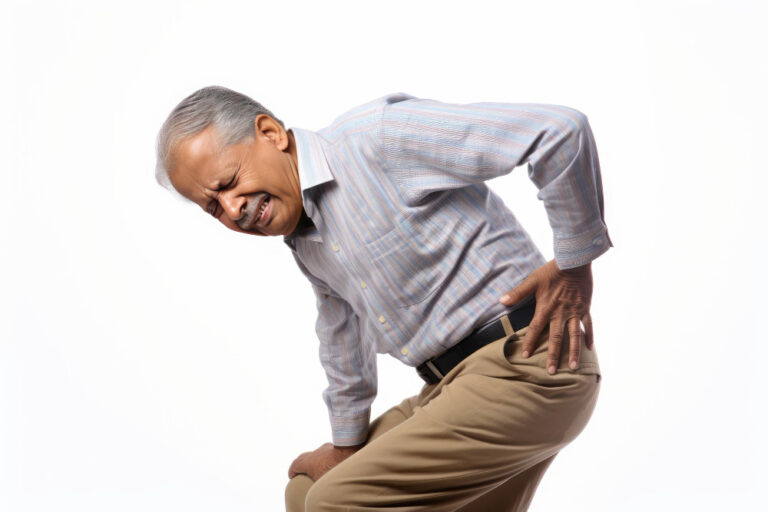Lumbar / Lower Back Pain Treatment In Hyderabad

Lumbar / Lower Back Pain Treatment In Hyderabad
Lower back pain is really common. It affects about 80% of adults at some point of their life.
Lower back pain is the most common cause of sick days from work and disability. It affects men and women, young or old. It is usually mild but can be severe and unbearable at times. It can start suddenly or slowly. It can be felt it in a small area of the lower back or over a much wider area. It can last anything between a few days or years. It can sometimes be hard to treat.
Lower back pain is often short term or acute, and lasts a few days to a few weeks and mild. It usually improves on its own with self-care. Sometimes acute lower back pain can be severe.
It is called subacute lower back pain if it lasts between 4 and 12 weeks.
Chronic lower back pain on the other hand, lasts for 3 months or longer, even after the initial injury or underlying cause of pain has been treated. Chronic lower back pain can occur in about 20% of people that get acute lower back pain. This means that the pain can continue for much longer than expected and in some of those cases the chronic lower back pain can be difficult to treat and debilitating.
Lower Back Pain Symptoms
Typical lower back pain symptoms include:
Aching muscles
Stabbing or burning pain
Pain that stretches down your leg, called sciatica.
Pain that increases with activity or reduces while laying down.
The Many Causes of Lower Back Pain
The causes of lower back pain can often be determined by your symptoms. Some of the most common include:
- Sacroiliitis. This condition is an inflammation of your sacroiliac joints, which form the connection between your lower spine and pelvis. Although it’s characterized by pain in your buttocks and lower back, the pain can extend down through your legs. Long periods of standing or stair climbing tend to increase the soreness.
- Arthritis. Arthritis of the spine is called spinal stenosis. It narrows the space for your spinal cord, causing irritation and discomfort. Although usually associated with aging, osteoarthritis can start causing painful symptoms as early as age 40.
- Osteoporosis. A condition that causes your bones to become more brittle and the spinal vertebrae to fracture. Osteoporosis typically occurs in older adults, but it’s also due to a lack of calcium, vitamin D and exercise.
- Soft tissue strain. Repetitive activity or sudden overexertion can strain your muscles or ligaments. Most people describe this condition as a pulled back, and it’s the most common source of isolated soreness, such as lower left or lower right back pain.
- Herniated discs. Your spinal vertebrae are cushioned by discs with a tough exterior and a soft interior. A herniation occurs when the hard covering ruptures, allowing the soft material to ooze out, which can pinch a nerve. This often leads to sciatica.
- Sciatica. When a herniated disc pinches the sciatic nerve, the pain begins in the lower back and stretches through the buttocks and down the back of your leg. The sensation can range from numbness to severe pain.
- Infection. A kidney infection, appendicitis, gynecological issues or even kidney stones may be the source of lower left back pain or lower right back pain.
Lumbar Sprain, Lumbar Slipped Disc, Lumbar Radiculopathy, Lumbar Muscle Spasm, Lumbar Herniated Disc, Lumbar Degenerative Disc Disease, Lumbar Bulging Disc, Lumbar Spine Degenerative Joint Disease
Chronic lower back pain on the other hand, lasts for 3 months or longer, even after the initial injury or underlying cause of pain has been treated. Chronic lower back pain can occur in about 20% of people that get acute lower back pain. This means that the pain can continue for much longer than expected and in some of those cases the chronic lower back pain can be difficult to treat and debilitating.
Treatment of Lumbar / Lower Back Pain:
- Pain medications, including corticosteroid injections.
- Cutting-edge procedures, such as a spinal cord stimulator if needed.
- Pain management techniques, like physical therapy
- Even minimally invasive surgical techniques


